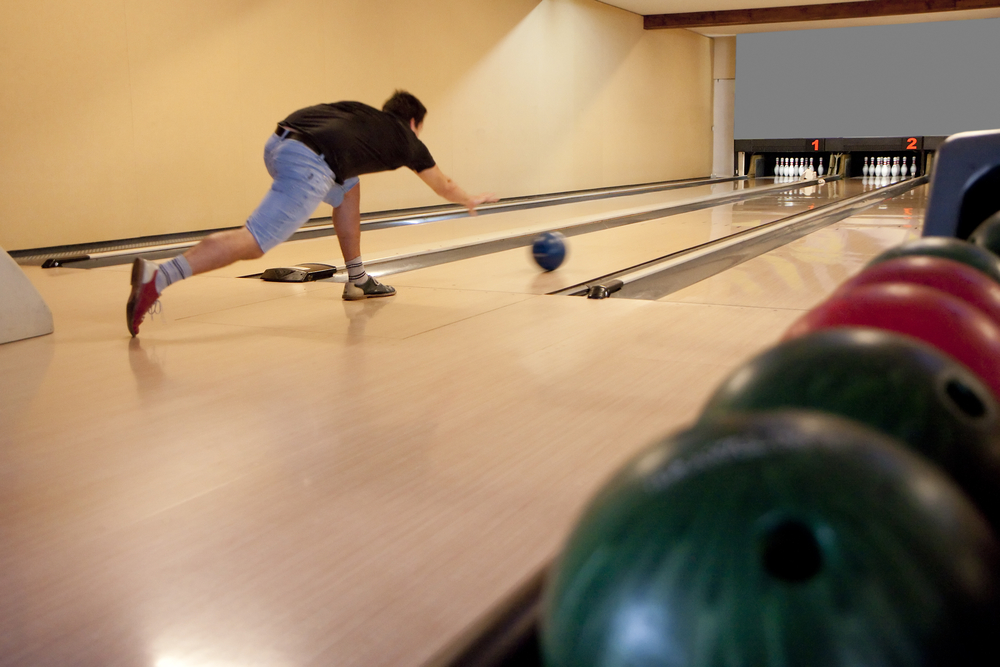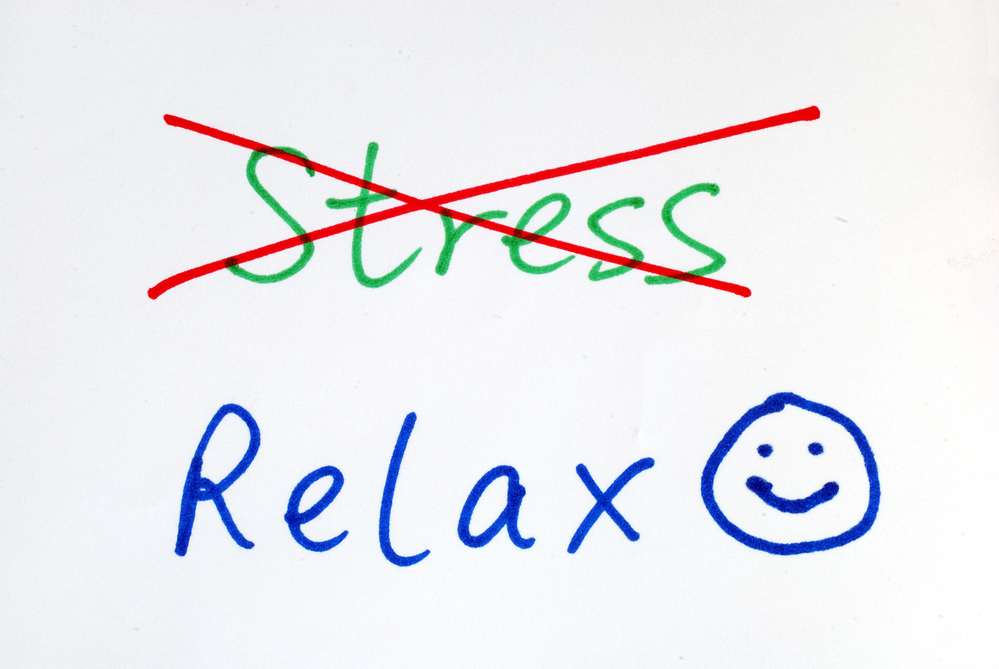
Bowling is considered one of America’s greatest pastimes.
This sport has been a fun and competitive game throughout numerous generations.
People of all ages gather at bowling alleys for teamwork, camaraderie, and bowling leagues.
Individuals of all shapes, sizes, ages, and abilities are equal in the world of bowling, and everyone is encouraged to play and participate without discrimination.
Besides the acceptance and adaptiveness of bowling, there are numerous bowling health benefits.
Though bowling may not be considered a high-impact sport, it remains a sport that helps the average bowler stay both physically and mentally fit, and having a good bowling foundation is a great start.
Through bowling, individuals of all abilities and ages can get physical exercise in a friendly environment while being socially and mentally stimulated.
Contents
- 1 The Physical Health Benefits of Bowling
- 2 Does Bowling Burn Calories?
- 3 Does Bowling Help You Lose Weight?
- 4 Does Bowling Build Muscle?
- 5 Does Bowling Improve Flexibility?
- 6 Does Bowling Improve Your Balance?
- 7 Does Bowling Improve Hand-Eye Coordination?
- 8 Can Bowling Reduce the Risk of Disease?
- 9 What Does Bowling Do for the Heart?
- 10 The Mental Health Benefits of Bowling
- 11 Can Bowling Relieve Stress?
- 12 Does Bowling Increase Mental Alertness?
- 13 Can Bowling Help Fight Depression?
- 14 How Does Bowling Improve My Social Life?
The Physical Health Benefits of Bowling
As mentioned before, bowling is not what you would consider a high-impact sport. Instead, bowling is viewed as a low-impact sport, which means that it is a form of exercise with numerous health benefits, and it's easier on the body, particularly the joints!
While low-impact sports tend not to burn calories as quickly as high-impact sports, they still work to keep you fit and in physical shape. There is just less of a risk for injury!
Key Takeaways
- Bowling is a low-impact, inclusive sport that offers significant physical and mental health benefits for people of all ages and abilities. It improves muscle strength, flexibility, balance, and hand-eye coordination.
- Participating in bowling can burn 150-300 calories per session, akin to a 25-minute jump rope workout, supporting weight loss and muscle building without high injury risks.
- Regular bowling helps reduce the risk of chronic diseases by lowering cholesterol and blood pressure and enhancing heart health. It's an effective exercise for managing diabetes, preventing heart attacks, and increasing bone density.
- Bowling relieves stress and boosts mood thanks to the release of endorphins during play. It enhances mental alertness, aids in fighting depression, and improves social life through teamwork and camaraderie.
- Bowling fosters social connections and reduces feelings of loneliness and depression. It's a community-driven activity that enhances overall well-being by providing a supportive environment for physical activity and mental health.
Does Bowling Burn Calories?

Yes, one of the physical perks of bowling is that it does indeed burn calories as it is played. During the course of each bowling turn, a player walks an average of sixty feet.
While that might not seem like much, remember that half that time is spent carrying a bowling ball that has a solid weight to it.
The player is also working to throw this ball, which causes calories to burn through muscle exertion (e.g., arm and leg muscles) while they are speeding up in their approach. This sequence of motions is then usually repeated through the course of three games, resulting in the player walking about a half a mile during the course of their turns.
Totaling all of these factors in together and we find that three games of bowling burns about 150-300 calories a night, that's roughly the same amount of calories you would burn if you jumped rope for 25 minutes!
The number of calories will vary though based off of the individual player’s weight. If you are in good shape or a lighter weight you will probably burn fewer calories during your night of bowling.
On the other hand, players who have more weight to them or are not in the best shape will generally burn more calories as they work through their bowling games.
Does Bowling Help You Lose Weight?
In order to lose weight, it is essential that you burn the excess fat found in different areas of your body.
The fat located on a human being’s body is essentially stores of energy that has been set aside due to extra, unneeded calories entering the system.
Through healthy, controlled calorie intake and a functioning exercise program, you can work to have your brain signal to the body to release the stored fat molecules so they may be transformed into energy for active cells.
This is where bowling comes helps. For some individuals, whether it be through age, ability, body type or just personal preference, high impact sports do not work as a valid form of exercise.
In these cases, bowling comes in as an excellent alternative to help encourage and promote exercise and the burning of calories. This sport works on numerous muscle groups while allowing players to go at their own pace as they work their bodies.
By bowling, you complete a workout and burn the same amount of calories as if you were jumping rope for twenty-five minutes.
So while you may not see as fast of a result as if you were using a high impact sport to exercise, bowling still allows you to burn calories and lose weight in the process.
Does Bowling Build Muscle?
Yes, you better believe it does! Bowling absolutely helps you build muscles.
When you are bowling, you are essentially hauling a weighted ball, using your arms, shoulders, legs, chest, abdomen and hand muscles to release said heavy ball, throwing your ball in a certain way (which requires muscle control) and making sure it has enough speed to roll down a sixty-foot lane.
Don’t see how this can build muscles yet? Take this sequence of steps and multiply it about fifty-four times, you’ll quickly figure it out!
Does Bowling Improve Flexibility?
Along with strengthening your muscles, bowling actually works to increase your flexibility as well. In order to throw a bowling ball the correct way, your body is required to stretch, twist and lunge in a certain way.
This stance helps extend your muscles, joints, and ligaments as you throw, increasing flexibility as you work through the stretches and lunges over and over again.
Now bowling doesn’t just improve flexibility in your upper body; it also helps your lower body considerably.
As you are throwing this weighted ball and moving your body through the necessary motions, your lower body is counterbalancing to keep up.
This counterbalance requires your lower body muscles and ligaments to stretch and flex, improving the flexibility in your lower body. Note that I also recommend yoga for improving flexibility.
Does Bowling Improve Your Balance?

During the course of bowling, you are constantly throwing a heavy ball with one side of your body. If you are following the correct posture, your body should be counterbalancing this weight to keep your posture and stance in the correct position.
These constant adjustments help train your muscles and brain in the skill of balancing, a skill that can then be transferred into everyday life or into other sports!
Does Bowling Improve Hand-Eye Coordination?
The game of bowling is all about hand-eye coordination and aiming! When you are bowling, you are working to throw a large weight down a sixty-foot bowling lane in order to hit the targeted spot you are aiming for.
To achieve this level of accuracy, you need to know where and how you are throwing your ball and how well it reacts to where you want it to go.
This adaptability to different targets and good hand to eye coordination is paramount to your success as a bowler.
Thankfully, the way the game is set up requires you to practice and work on this skill as you evolve as a bowler. The more you play the game, the more your hand-eye coordination will improve.
Can Bowling Reduce the Risk of Disease?
Since bowling is a legitimate form of exercise, you get the preventive benefits towards reducing the risk of diseases. By bowling once a week (for optimal benefits), you can lower the risk of getting diabetes, having a heart attack, and having a stroke.
Bowling also works to lower cholesterol, lower blood pressure, increase blood oxygenation (i.e., helps the body utilize oxygen), and increase bone density. (Please note: These benefits often coincide with a healthy, balanced diet.)
What Does Bowling Do for the Heart?
The low-impact exercise bowling provides plus the adrenaline rushes you get while playing the game help stimulate the heart muscles.
By using your heart muscles more, you decrease your chances of heat-related illness and conditions as well as improve your overall muscle strength.
So by bowling, you are able to improve your heart’s overall health and prevent different types of heart-related risks.
The Mental Health Benefits of Bowling

When you think of health benefits the things that pop into your mind may mostly be related to physical benefits. However, just like it is important to take care of your physical health, it is also important to pay attention and care for your mental health.
One of the many reasons bowling is such a great sport to play is that while it helps improve the physical aspects of your health, you are also taking care of your mental health at the same time!
Can Bowling Relieve Stress?

While this kind of ties in with the physical benefits of bowling, bowling is indeed a great stress reliever.
When exercising, bowling included, your brain releases endorphins that improve your mood and lower stress. Hypertension and high blood pressure are also lowered through bowling, decreasing stress as well.
Bowling is also an extremely social sport. While at the bowling alley, socializing with your teammates and remaining in constant motion, you are able to work through your problems and relax your mind as well as your muscles.
Your brain can also release endorphins when it feels at peace and satisfied with the social interaction it is receiving.
Does Bowling Increase Mental Alertness?

Depending on who you ask the game of bowling can be based on mental skill ninety percent of the time.
When aiming your ball, you have to think about how you will throw it, how you will follow through with your release and how you will move your body.
But wait, what oil pattern is down?
You have to make adjustments to your approach and stance based on that oil pattern! Should you aim for the wet or dry part of the lane? How big of a hook should you throw?
Your knee has been acting up so you should probably adjust your normal stance to something different.
Should you get a knee brace? Do you need one for such a small injury?
Which dot do you need to aim for to pick up spare pins again?
Why are your teammates laughing so loudly behind you?
Oh no, this is the throw after a strike so you can’t miss or those points will be wasted!
Clearly, there is a lot to think about and also a lot of distractions to tune out as you focus on your game.
Visualizing where your ball will go, adjusting your stance to allow muscle memory to take over, adjusting your release as you move and maintaining focus are all ways you practice staying on task and increase your mental awareness while bowling.
Now as you bowl more and more, some of the strategic parts of bowling may become second nature, but the pressure to do well and exceed is always present.
This pressure and the need for constant adjustment helps encourages us to think quickly and make split-second decisions. It also helps you cope with being under pressure and how to handle different types of stresses, resulting in better and clearer thinking.
Can Bowling Help Fight Depression?

While bowling can certainly be used as an aid in the fight against depression, it is not by any means a cure-all. Bowling is an incredibly social game, with constant communication and support being passed from teammate to teammate.
By immersing yourself into the world of bowling, you are giving yourself a fun support group that you can have a good time with. This social interaction, as well as the game of bowling itself, can help elevate your mood and aid in balancing out some hormones.
Bowling also helps fight the winter blues by offering an indoor activity that gets you out of the house and moving no matter the weather outside.
By going once a week, you get a break from being locked up inside during cold days and get to socialize with friends. You also get to exercise and move in a relaxed environment as you unwind from the stress of the day.
| Benefit Category | Specific Benefits | Notes |
|---|---|---|
| Physical Health | Muscle Strength, Flexibility, Balance | Low-impact exercise; suitable for all ages |
| Calorie Burning (150-300 calories/3 games) | Equivalent to 25 minutes of jump rope | |
| Reduces Risk of Chronic Diseases | Including heart disease, diabetes, improves bone density | |
| Mental Health | Stress Relief, Enhanced Mental Alertness | Releases endorphins, improves mood |
| Fights Depression, Improves Social Life | Encourages social interaction, aids in combating loneliness | |
| General Well-being | Inclusivity, Community Building | Suitable for individuals of all ages and abilities |
| Historical and Cultural Significance | One of America's longest and richest sporting histories |
How Does Bowling Improve My Social Life?

Humans as a species are creatures who require socialization and interaction with others. It is simply part of our biology; we need to form relationships with others and express ourselves through those relationships.
Failing to listen to this need can result in mood swings, loneliness, depression, and decreased motivation.
Bowling, the nation's largest participation sport, helps fight against these negative emotions by introducing us to new friends or by having us socialize with our teammates once a week.
Studies have shown that even if we bowl just once a week, the mental reward we get from that interaction with others can literally impact our physical well being.
By socializing at least once a week we are at a lower chance of having depression, have an increased immunity, and can even decrease our risk for certain types of cancers!
My Final Words
In leisure and sport, bowling offers unique benefits that span physical health, mental well-being, and social engagement. Not only does participating in a three-game series promote moderate physical exercise, but it also places bowling among the few sports that are accessible and beneficial to a wide demographic, including senior citizens. This activity is noted for being a leading preventive measure against risk factors associated with sedentary lifestyles, offering optimum benefits for cardiovascular health and weight management.
Moreover, the abundance of bowling alleys across the nation, each with its own place in one of the longest and richest histories in recreational sports, ensures that this pastime remains a popular choice for many. Specifically, for senior citizens, bowling provides an excellent opportunity to maintain physical activity levels while greatly enhancing their social life. The simplicity of all the scoring in bowling makes it easy for newcomers to pick up and for seasoned players to enjoy competitive play, reinforcing the sport's appeal across generations.
Ultimately, the combination of these factors makes bowling not just a game but a pathway to improved health, a vibrant social life, and enjoyment for participants of all ages.
Kira Byrd, a Certified Fraud Examiner, holds a B.S. in Accounting from the University of Alabama at Birmingham. With a passion for bowling from her childhood, Kira has poured her expertise and personal experiences into creating and nurturing Bowling For Beginners. Kira's mission is to meet new bowlers where they are and guide them toward consistently achieving higher scores. With a focus on skill development and strategic techniques, she empowers readers to take control of their game and unlock their true potential.
Bowling For Beginners embodies strict editorial integrity, ensuring reliable and unbiased information. Kira's commitment to delivering valuable insights and practical strategies is reflected in every article. Here's an explanation of our editorial policy and how we get money.





